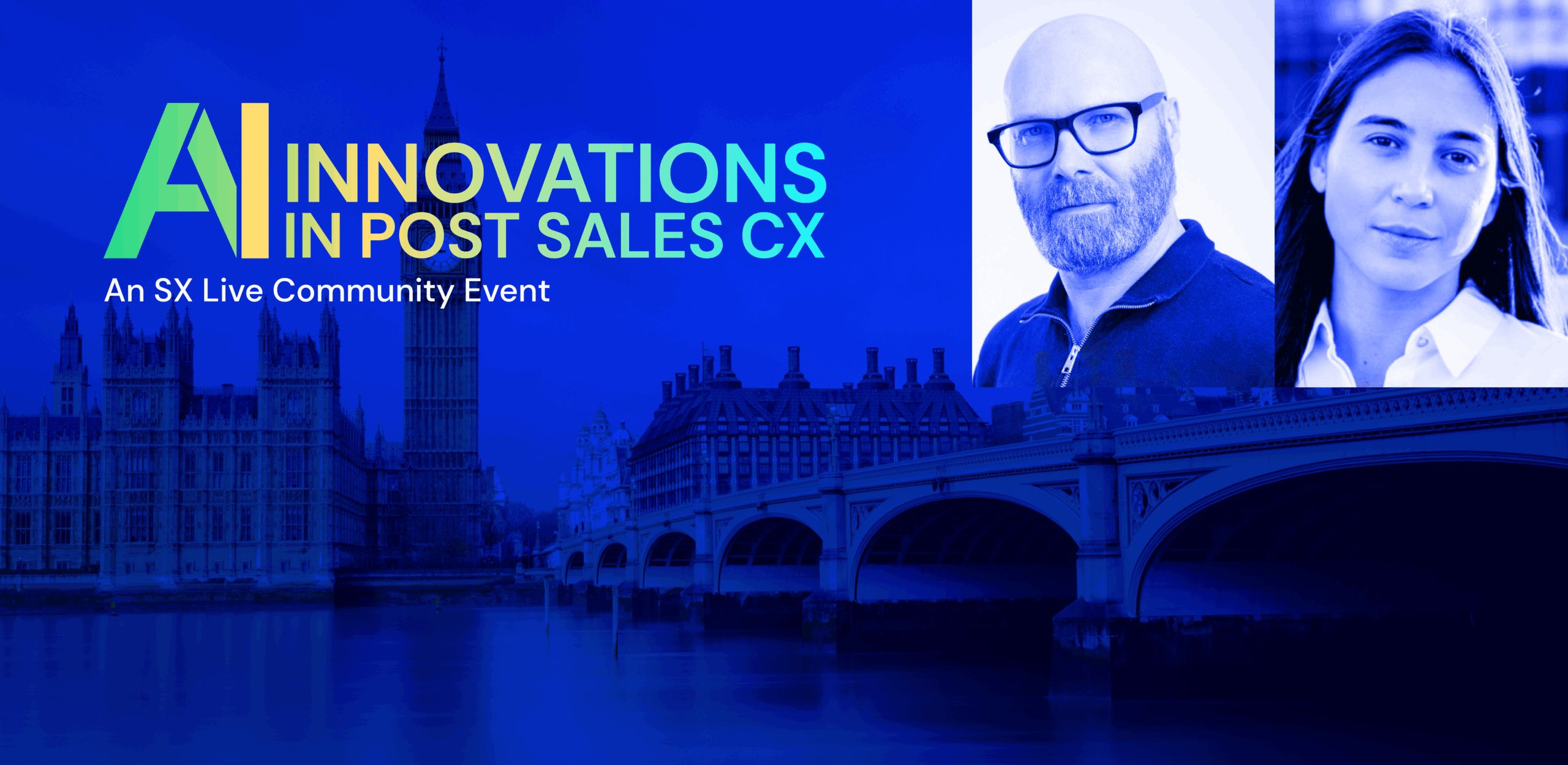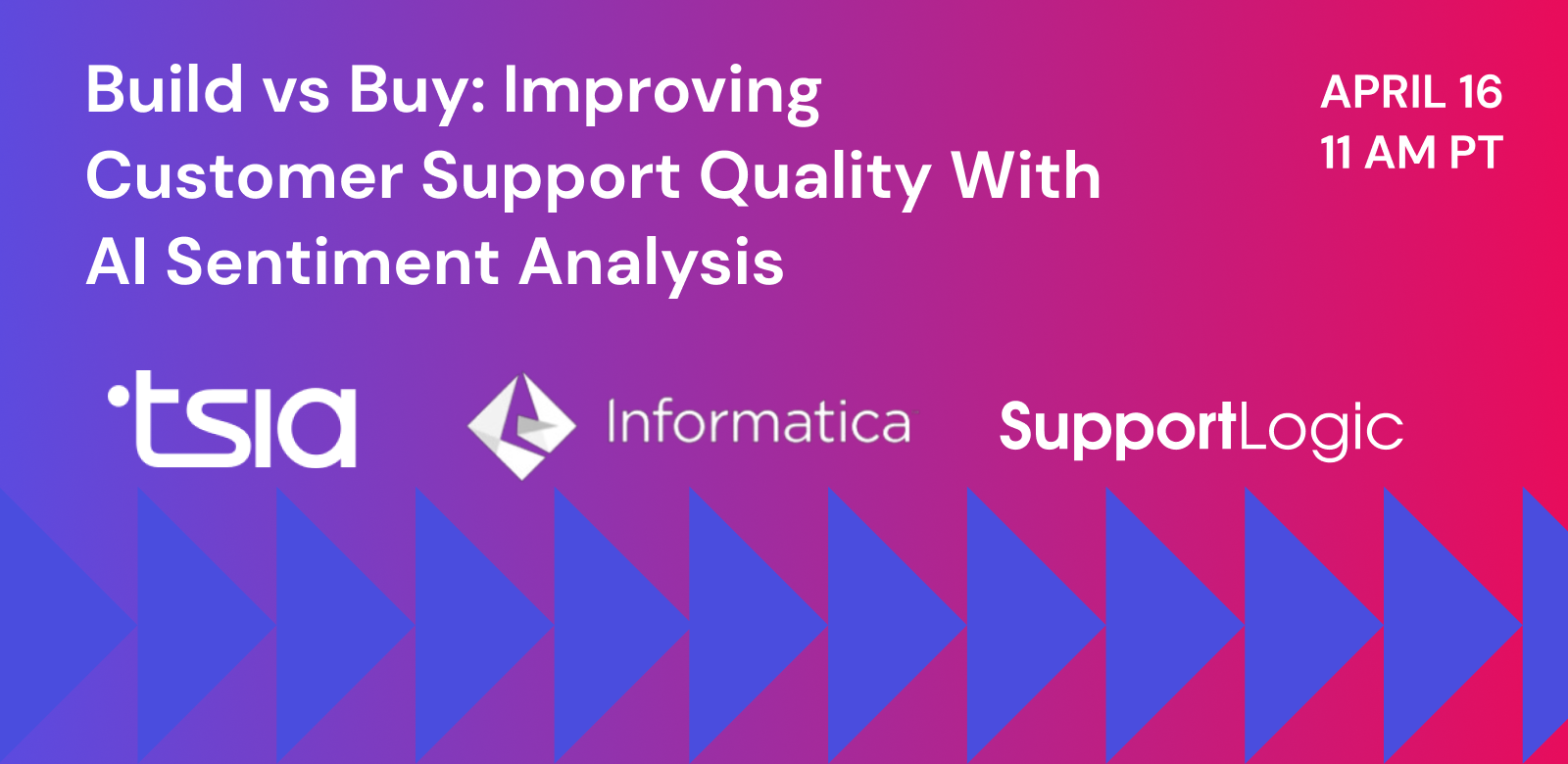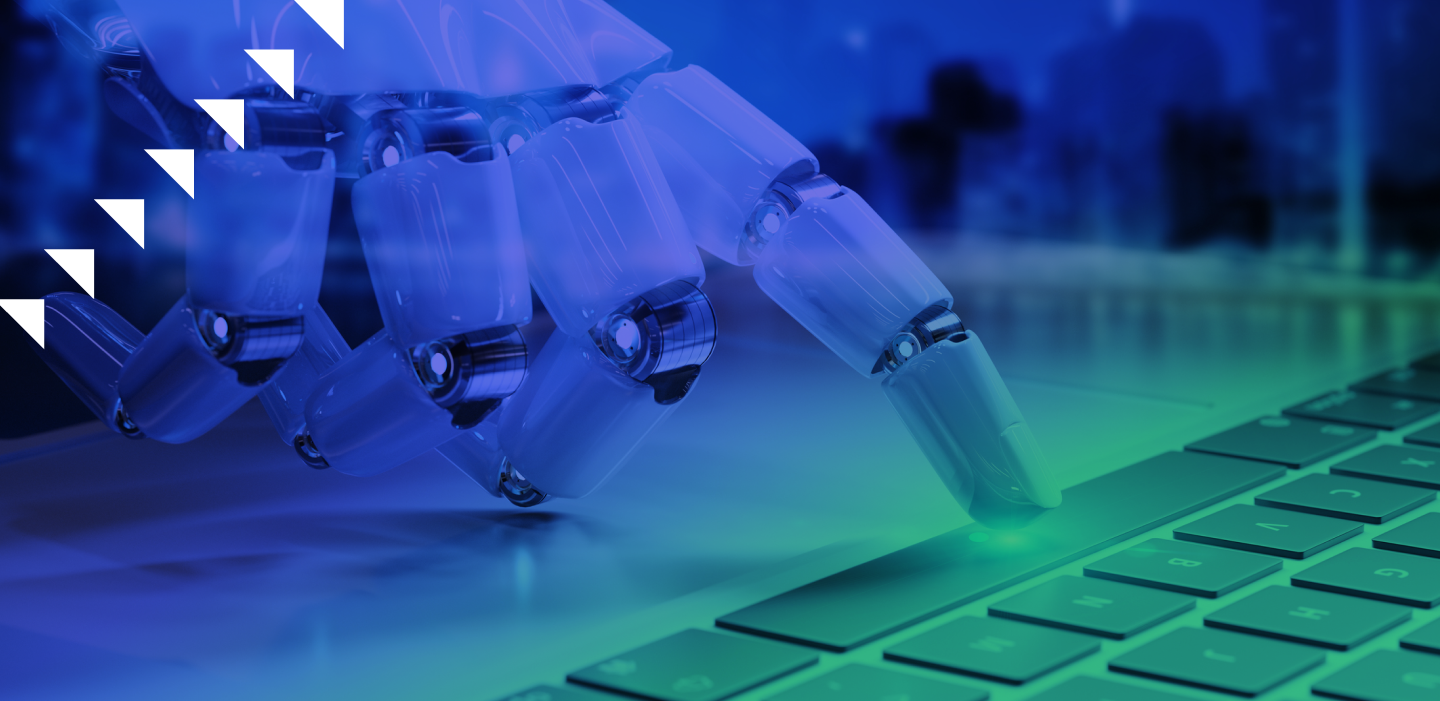
Jun 24, 2025
Key Takeaways from Our London Panel: How Transformational CX Leaders Are Leveraging AI
CX TransformationSupport ExperienceAI for supportgenerative AI
At our recent event in London, AI Innovations in Post-Sales CX, we had the privilege of hearing from two transformational customer experience leaders: Erika Semtei, VP of Customer Support at Braze, and Declan Fanning, Senior Director at Coupa. They shared their AI adoption journeys, lessons learned and the business impact from using SupportLogic.
Here are the most important takeaways:
1. Start with an Internal Use Case to Build Momentum
Both Braze and Coupa shared a common approach to adopting AI: start small, focus on internal support operations processes, and scale based on proven value. Erika Semtei from Braze emphasized that AI should first support internal efficiency before extending to customer-facing experiences. Her team prioritized use cases like sentiment analysis and escalation prevention, which allowed them to proactively address customer concerns while avoiding the risks associated with deploying customer-facing AI too soon. This internal-first approach led to measurable improvements in customer satisfaction and a meaningful reduction in escalations.
Declan Fanning from Coupa shared a similar story. Coupa’s initial AI deployment focused on escalation management—specifically predicting which cases were likely to escalate. This proactive insight immediately improved case handling and customer outcomes. They then expanded to intelligent case assignment, ensuring that every case was routed to the best possible agent based on expertise, workload, and context. This directly improved their most critical KPI: time to resolution.
Starting internally gave both companies the ability to refine processes, drive adoption among their teams, and build confidence in AI before taking bigger steps. It was a pragmatic and risk-managed approach that delivered quick wins and set the foundation for broader transformation.
Here’s a short clip of Erika explaining further:
2. Sentiment and Signals Drive Proactive Support
A major theme from both Coupa and Braze is that AI-driven sentiment and signal detection are game changers for proactive support. Historically, support organizations reacted to customer problems after they were reported. With AI models analyzing case data, email threads, and conversations in real-time, support teams now have the ability to surface early warning signs before a problem escalates.
Declan shared how Coupa uses over 1,700 customized alerts powered by signals like frustration, confusion, or churn risk. While that may sound like a large number, they thoughtfully structured alerts into team-wide priorities and also empowered individuals to configure personal alerts tailored to their responsibilities. This layered approach allows Coupa’s support team to be hyper-responsive, addressing small issues before they become large ones.
Braze uses signals in a slightly different but equally impactful way. They empower their most experienced agents to act like team leads by proactively scanning for cases flagged by SupportLogic’s “low attention” or “negative sentiment” signals. These agents can then jump in to start a case swarm, pulling in the right experts to resolve issues faster. This not only improves customer outcomes but also drives continuous knowledge sharing among the team.
Here’s a clip of Declan explaining further:
3. A Clean Knowledge Base Is a Prerequisite for Self-Service
Both panelists made it crystal clear: you cannot build a strong AI-powered self-service experience without first having a clean, comprehensive, and accurate knowledge base. Erika explained that Braze recognized this as a foundational requirement. Rather than jumping straight to customer-facing AI, her team first focused on cleaning up their internal knowledge systems. That meant eliminating duplicate articles, ensuring consistency in tone and format, and identifying gaps in documentation.
AI plays a crucial role here, too. Braze is leveraging AI tools not only to improve the quality of existing content but also to enable agents to generate new articles faster and more consistently than ever before. This creates a virtuous cycle where every resolved issue improves the knowledge base, which then empowers future self-service and faster resolution for both agents and customers.
Declan echoed this point, sharing that Coupa has noticed a direct correlation between the “confusion” signal and cases where the knowledge base is lacking. This insight has now informed their roadmap—targeting confusion isn’t just about fixing one case; it’s about enriching content to prevent dozens of future cases. In short, better knowledge management is both a support efficiency play and a prerequisite for scalable AI.
4. Build vs. Buy: Buy for Speed and Scale, Hybrid for the Future
The classic “build versus buy” debate came up—and both companies had strong perspectives. For CX applications, both leaders leaned heavily toward buying specialized solutions rather than building in-house. Erika pointed out that while building gives initial flexibility, the long-term reality is that internal tools often become brittle. As engineering priorities shift, the support team is left with under-maintained systems that are difficult to evolve. This results in lost agility and growing technical debt.
By choosing a platform like SupportLogic, Braze gains immediate access to advanced capabilities, an expert support team, and an evolving product roadmap—all without the overhead of in-house development. Erika did note one caution: in a rapidly changing AI market, it’s wise to avoid locking into long-term contracts before fully validating the solution.
Declan added that Coupa’s decision came down to three factors: scalability, minimal customization needs, and low maintenance burden. While Coupa is itself an AI-driven company, they recognized that a focused, purpose-built AI solution for CX would deliver faster value than developing a bespoke one internally.
Both leaders agreed, though, that the future is likely hybrid—combining vendor platforms like SupportLogic with internally developed AI models tailored to their core IP, unique data and workflows.
5. Implementation Success Hinges on Change Management and Training
Despite how seamless the technology integration itself was—both Coupa and Braze said that the SupportLogic connection to Salesforce was “plug and play”—the real challenge was internal. Implementing AI doesn’t just mean turning on a tool; it means transforming how people work.
Both Erika and Declan emphasized the need for a robust change management strategy. This starts with clear communication—explaining to teams why the AI is being introduced and how it benefits them. It also requires structured training, ongoing reinforcement, and executive sponsorship.
Coupa used engagement reporting to track who was actively using the tool, allowing them to quickly intervene with additional training for those who weren’t engaging. They also leaned heavily on internal champions and a dedicated program manager to drive adoption.
Braze echoed similar lessons. A critical success factor was ensuring internal stakeholders—especially Salesforce admins—were prepared and had time allocated for setup and support. Just as important was normalizing AI as part of the daily workflow, helping leaders and frontline staff incorporate signal monitoring and proactive case management into their routines.
6. AI Adoption Is Reshaping Training and Hiring
AI isn’t just changing how teams work—it’s changing the skills teams need. Both Coupa and Braze are proactively adapting their training and hiring strategies to keep pace.
Erika explained that Braze has launched AI fundamentals training for their customer experience teams. This ensures that everyone, from frontline agents to leaders, understands how AI works, how it’s applied in their roles, and how to use it effectively. They’ve also noticed AI bleeding into hiring processes—for example, realizing that written take-home tests are now easily solvable via AI tools like ChatGPT. As a result, they’re shifting toward more live problem-solving interviews to better assess candidates’ critical thinking.
Declan noted that Coupa sees a growing need for data analyst roles embedded within support. As AI surfaces more complex insights and signals, someone needs to interpret them, build dashboards, and drive action. They are investing in training their teams not just to use AI tools but to understand how to work with data—how to ask the right questions and turn insights into business outcomes.
Both leaders agree: prompting skills, data literacy, and AI fluency are fast becoming must-haves in the modern CX org.
7. Soft Skills Are Still the Differentiator
While AI can automate routing, monitor sentiment, and flag risks, it still can’t replace the human skills that truly define a great customer experience. Declan shared a powerful insight from Coupa’s data: the number one predictor of a top-performing support agent isn’t technical knowledge—it’s communication. Specifically, it’s how well and how frequently an agent communicates with customers.
The highest-performing agents are those who maintain clear, structured, and proactive communication. They set expectations, provide updates, and demonstrate empathy—all skills AI can’t fully replicate. This insight has driven Coupa to build templates and workflows that reinforce effective communication, making it easier for all agents to adopt these best practices.
Erika echoed this, pointing out that soft skills like empathy, active listening, and the ability to navigate ambiguity are the traits that differentiate good support from great support. While AI takes care of the repetitive tasks and surfaces risks, it frees agents to focus on these more complex, high-value interactions.
In both organizations, the message is clear: AI amplifies human skills—it doesn’t replace them.
8. AI Can Improve Employee Retention, Not Just CX
A fascinating insight from both Braze and Coup is that AI doesn’t just improve customer outcomes. It improves employee satisfaction and retention.
Declan pointed out that by automating routine tasks, improving routing accuracy, and reducing the chaos of surprise escalations, AI creates a less stressful work environment. Agents feel more in control, more supported, and more effective. This has contributed to Coupa’s ability to grow their support team rather than shrink it, even after deploying AI.
Erika highlighted that empowering senior agents with tools like SupportLogic actually makes their jobs more fulfilling. Instead of focusing solely on their own queues, these tenured agents are able to play a more strategic role—mentoring others, initiating case swarms, and having a broader impact on team success.
Krishna added examples from other customers where AI has been used to surface abusive customer language, enabling companies to set policies that protect employees. He also noted that faster onboarding through better knowledge management reduces burnout and improves retention.
The takeaway is clear: AI isn’t just a cost efficiency play—it’s a tool for building healthier, happier support organizations.
Final Thoughts
AI is transforming the way modern CX leaders operate—not through hype, but through pragmatic, signal-driven workflows that improve both customer and employee outcomes in a real and measurable way. As Erika put it: “AI isn’t replacing people—it’s helping them do their best work.”
Watch the full discussion with Erika and Declan here:
To learn more about how SupportLogic can help you operationalize AI for CX, join our weekly demo.
Don’t miss out
Want the latest B2B Support, AI and ML blogs delivered straight to your inbox?



